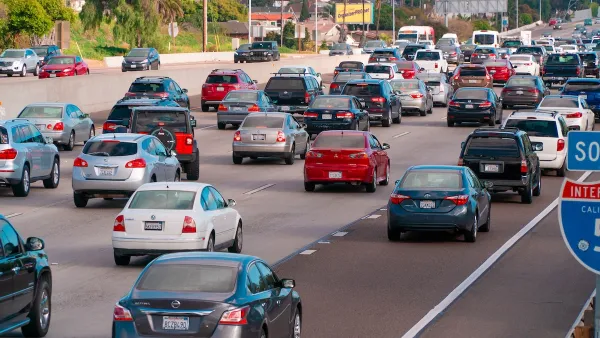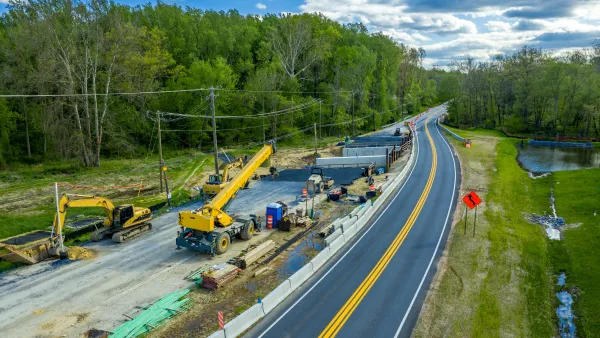The well-documented concept has yet to catch on in state departments of transportation, but acknowledging it could dramatically transform U.S. transportation policy.

Despite frequent and repeated evidence that adding roadway capacity attracts more drivers, Jake Blumgart examines why the concept of induced demand remains a 'hard sell' for many policymakers and transportation professionals.
"Induced demand has been theorized for almost 100 years, formally studied beginning in the 1960s, and quantitatively measured in the 1990s and the early 21st century. This basic concept is key to understanding congestion relief, which is arguably the central policy goal of American transportation planning." Yet the somewhat counterintuitive idea remains "one of the least understood concepts in transportation policy," Blumgart writes, with the consequences apparent in transportation planning and projects across the country.
Blumgart describes how the phenomenon works—essentially, "If the speed of traffic in a given network increases, that prompts people to drive more"— and why it's hard to understand—a combination of intuition and decades of road expansion presented as the solution to traffic, including by transportation engineers. "An entire industry has been built up around endless road expansion and advocacy organizations like the American Society of Civil Engineers are skilled lobbyists for continuing current practices."
Meanwhile, politicians are afraid to reject road expansion proposals and their immediate effects on congestion in favor of long-term planning and unpopular, but effective, alternatives like congestion pricing.
In a future article in the same Governing series, Blumgart will describe how induced demand could change policy in state DOTs.
FULL STORY: Why the Concept of Induced Demand Is a Hard Sell

Analysis: Cybertruck Fatality Rate Far Exceeds That of Ford Pinto
The Tesla Cybertruck was recalled seven times last year.

National Parks Layoffs Will Cause Communities to Lose Billions
Thousands of essential park workers were laid off this week, just before the busy spring break season.

Retro-silient?: America’s First “Eco-burb,” The Woodlands Turns 50
A master-planned community north of Houston offers lessons on green infrastructure and resilient design, but falls short of its founder’s lofty affordability and walkability goals.

Test News Post 1
This is a summary

Analysis: Cybertruck Fatality Rate Far Exceeds That of Ford Pinto
The Tesla Cybertruck was recalled seven times last year.

Test News Headline 46
Test for the image on the front page.
Urban Design for Planners 1: Software Tools
This six-course series explores essential urban design concepts using open source software and equips planners with the tools they need to participate fully in the urban design process.
Planning for Universal Design
Learn the tools for implementing Universal Design in planning regulations.
EMC Planning Group, Inc.
Planetizen
Planetizen
Mpact (formerly Rail~Volution)
Great Falls Development Authority, Inc.
HUDs Office of Policy Development and Research
NYU Wagner Graduate School of Public Service




























